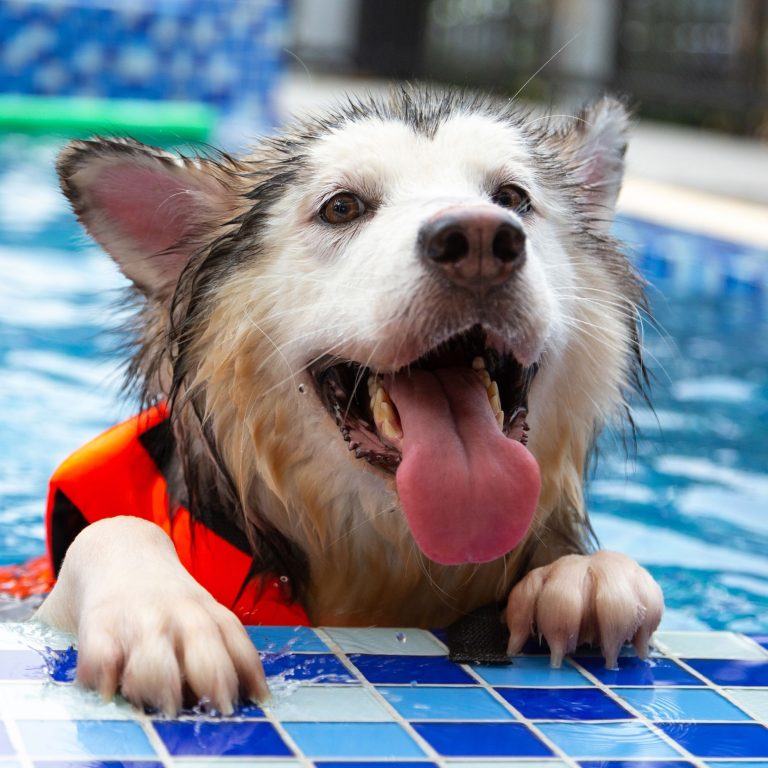Unleash the Power of Technology: Upgrade Your Fish Tank with Wireless Sensors
Enhancing Your Fish Tank with Wireless Sensors
Welcome to the exciting world of wireless sensors for fish tanks! By upgrading your fish tank with these cutting-edge devices, you can take your fish-keeping experience to a whole new level. Let’s dive into the introduction to wireless sensors for fish tanks and explore the benefits of incorporating them into your setup.
Introduction to Wireless Sensors for Fish Tanks
Wireless sensors are innovative devices designed to monitor and track various aspects of your fish tank’s environment. These sensors utilize advanced technology to collect real-time data on parameters such as temperature, pH levels, and ammonia levels. With wireless connectivity, the data is transmitted to your smartphone, tablet, or computer, allowing you to monitor your fish tank from anywhere at any time.
Gone are the days of manual testing and guesswork when it comes to maintaining optimal conditions for your aquatic friends. With wireless sensors, you can gain valuable insights into your fish tank’s environment, enabling you to make informed decisions and ensure the well-being of your fish.
Benefits of Upgrading Your Fish Tank with Wireless Sensors
The benefits of upgrading your fish tank with wireless sensors are numerous. Let’s explore some of the key advantages:
-
Real-time monitoring: Wireless sensors provide you with up-to-the-minute information about your fish tank’s water parameters. This allows you to identify any potential issues swiftly and take immediate action to rectify them. No more waiting for manual tests or risking the health of your fish due to delayed intervention.
-
Convenience and accessibility: With wireless sensors, you have the convenience of accessing your fish tank’s data from the palm of your hand. Whether you’re at home, work, or even on vacation, you can monitor the conditions of your fish tank remotely. This level of accessibility gives you peace of mind and ensures that you never miss a beat when it comes to maintaining a healthy environment for your aquatic pets.
-
Prevention and early detection: Wireless sensors can help you prevent disasters by providing early warnings. For example, if the temperature in your fish tank starts to rise unexpectedly, you will receive an alert on your device. This allows you to take immediate action to cool down the tank and prevent any harm to your fish. Similarly, if the pH or ammonia levels deviate from the ideal range, you can address the issue promptly.
-
Data analysis and historical tracking: Wireless sensors often come with companion apps or software that allow you to analyze historical data trends. By tracking changes in water parameters over time, you can identify patterns and make adjustments to improve the overall health and well-being of your fish.
-
Saves time and effort: With wireless sensors taking care of continuous monitoring, you can spend less time conducting manual tests and more time enjoying your fish tank. The automation provided by these devices simplifies the maintenance process, allowing you to focus on the more enjoyable aspects of fish-keeping.
By upgrading your fish tank with wireless sensors, you’re stepping into the future of fish-keeping. With features like real-time monitoring, accessibility, prevention, and time-saving convenience, these devices provide an invaluable toolset for maintaining a thriving aquatic environment. So why wait? Dive into the world of wireless sensors and unlock the full potential of your fish tank!
Monitoring Water Parameters
Properly maintaining the water quality in your fish tank is crucial for the health and well-being of your aquatic pets. Wireless sensors provide an innovative solution to monitor water parameters conveniently and accurately. By investing in wireless sensors for your fish tank, you can ensure that the conditions are optimal for your fish to thrive. Let’s explore the importance of water quality and the wireless sensors available for monitoring key parameters.
Importance of Water Quality in Fish Tanks
Maintaining good water quality is essential because fish rely on their environment for oxygen, nutrition, and waste removal. Poor water quality can lead to stress, disease, and even death in fish. Monitoring key water parameters is vital to ensure a healthy aquatic environment. Some parameters that need to be monitored include temperature, pH, and ammonia levels. By keeping these parameters within the optimal range, you can create a thriving habitat for your fish.
Wireless Sensors for Temperature Monitoring
Temperature plays a critical role in the overall well-being of your fish. Different fish species thrive in specific temperature ranges. Wireless sensors for temperature monitoring allow you to track and maintain the ideal temperature for your fish tank. These sensors provide real-time temperature readings, which can be conveniently accessed through a mobile app or a monitoring system. By closely monitoring the temperature, you can promptly make adjustments to maintain a stable and comfortable environment for your fish.
Wireless Sensors for pH Monitoring
pH levels greatly impact the overall health of fish and the functioning of their biological systems. Different fish species have varying pH requirements. Wireless sensors for pH monitoring offer a quick and accurate way to measure the pH level in your fish tank. These sensors provide continuous monitoring, allowing you to keep track of any fluctuations. By monitoring and adjusting the pH level as needed, you can create a stable and suitable environment for your fish.
Wireless Sensors for Ammonia Monitoring
Ammonia is a toxic substance that can accumulate in fish tanks due to fish waste, decaying food, and other organic matter. High levels of ammonia can be deadly to fish. Wireless sensors for ammonia monitoring enable you to detect and monitor ammonia levels in real-time. These sensors provide alerts and notifications when ammonia levels exceed the safe range, allowing you to take immediate action to mitigate any potential harm to your fish.
To effectively monitor water parameters, it’s important to choose the right wireless sensors for your fish tank. Consider factors such as sensor accuracy, compatibility with your monitoring system, and ease of use. For more information on fish tank monitoring systems and other smart devices for your aquarium, check out our article on aquarium monitoring systems.
By utilizing wireless sensors for temperature, pH, and ammonia monitoring, you can take proactive steps to ensure optimal water quality in your fish tank. These sensors provide convenience and accuracy, allowing you to maintain a healthy and thriving aquatic environment for your beloved fish. Remember, happy fish thrive in a well-monitored and well-maintained tank.
Automated Feeding Systems
When it comes to taking care of your fish, feeding them is an essential task. However, manual feeding can sometimes be challenging, especially if you have a busy schedule or need to be away from home for extended periods. That’s where automated feeding systems come to the rescue. These innovative devices offer a convenient solution to ensure your fish are fed consistently and appropriately, even when you’re not around.
Challenges of Manual Feeding
Feeding fish manually can pose certain challenges. It can be difficult to maintain a consistent feeding schedule, especially if you have a hectic lifestyle. Overfeeding or underfeeding can lead to health issues for your fish, affecting their growth and overall well-being. Additionally, relying on manual feeding means you may not be able to monitor their feeding habits closely, which can be crucial in identifying any changes in appetite or behavior.
Benefits of Automated Feeding Systems
Automated feeding systems offer numerous benefits for both you and your fish. These devices allow you to set a predetermined feeding schedule, ensuring that your fish receive their meals at the right time and in the right quantity. This consistency helps to establish a routine and maintain a healthy diet for your fish.
By using automated feeding systems, you can also minimize the risks of overfeeding or underfeeding. These devices dispense precise portions of food, preventing excess food from accumulating in the tank and causing water quality issues. Moreover, automated feeding systems can help reduce food waste, saving you money in the long run.
How Wireless Sensors Improve Automated Feeding
Wireless sensors play a crucial role in enhancing the functionality of automated feeding systems for fish tanks. These sensors can provide real-time data on various parameters, such as temperature, pH levels, and ammonia levels, which are essential for maintaining a healthy aquatic environment.
By integrating wireless sensors into your automated feeding system, you gain the ability to monitor and adjust feeding based on the water conditions in your fish tank. For example, if the temperature rises, indicating increased metabolic activity, the sensors can trigger the system to provide additional feedings to meet the fish’s increased energy needs. Similarly, if the ammonia levels exceed acceptable limits, the sensors can alert you to take necessary actions, such as adjusting the feeding schedule or conducting a partial water change.
With wireless sensors, you have greater control and peace of mind, knowing that you can monitor and adjust your fish’s feeding routine based on their specific needs. This integration of technology allows you to provide optimal care for your fish, even when you’re not physically present.
When considering automated feeding systems for your fish tank, it’s essential to choose the right system that fits your tank size, fish species, and feeding requirements. Additionally, make sure to follow the manufacturer’s instructions for setting up and maintaining the system. For more information on fish tank monitoring systems and other smart fish tank devices, check out our article on fish tank monitoring systems.
By upgrading your fish tank with wireless sensors and automated feeding systems, you can ensure that your fish receive the right amount of food at the right time, promoting their health and well-being. With this technology at your fingertips, you can confidently enjoy your time away from home, knowing that your fish are well taken care of.
Remote Monitoring and Control
Upgrade your fish tank to a whole new level of convenience and control with wireless sensors. With these advanced technologies, you can access and manage your fish tank anytime, anywhere. Let’s dive into the exciting possibilities of remote monitoring and control.
Accessing Your Fish Tank Anytime, Anywhere
Imagine being able to check on your fish tank even when you’re away from home. With wireless sensors, you can do just that. By connecting your fish tank to a mobile app or web interface, you can access real-time data and video feeds of your fish tank from anywhere with an internet connection.
Whether you’re at work, on vacation, or simply out and about, you can keep an eye on your fish and ensure they are thriving in their aquatic environment. Stay connected to your underwater world and get peace of mind knowing that you can monitor your fish tank at any time. Check out our article on remote fish tank monitoring for more information.
Controlling Fish Tank Parameters Remotely
Wireless sensors not only allow you to monitor your fish tank but also give you the power to control important parameters remotely. Adjusting water temperature, pH levels, and other crucial factors can now be done with just a few taps on your smartphone or computer.
Imagine being able to fine-tune the temperature of your fish tank on a hot summer day or making immediate adjustments to maintain optimal pH levels. With wireless sensors, you have the ability to create the perfect environment for your fish, even when you’re not physically present. Explore the possibilities of automated fish tank monitoring and control with our article on automated fish tank monitoring.
Notifications and Alerts for Fish Tank Maintenance
Stay on top of your fish tank maintenance with notifications and alerts sent directly to your device. Wireless sensors can be programmed to monitor various parameters and alert you when certain conditions are met. For example, if the water temperature exceeds a preset range or the ammonia levels become too high, you can receive an instant notification, allowing you to take prompt action.
These notifications serve as reminders for routine water changes, filter maintenance, or any other essential tasks to keep your fish tank in optimal condition. By receiving timely alerts, you can address issues before they escalate and ensure the well-being of your aquatic friends. Discover the benefits of fish tank monitoring systems with our article on fish tank monitoring systems.
With remote monitoring and control, you can unleash the power of technology and take your fish tank to new heights. Access your fish tank anytime, anywhere, control important parameters remotely, and receive notifications and alerts for maintenance. Embrace the convenience and peace of mind that wireless sensors bring to your aquatic hobby. Start exploring the world of smart fish tank devices and experience a whole new level of fishkeeping.
Making the Most of Wireless Sensors
To truly harness the power of wireless sensors and optimize your fish tank monitoring experience, it’s important to choose the right sensors, ensure proper setup and installation, and be aware of troubleshooting and maintenance tips.
Choosing the Right Sensors for Your Fish Tank
When selecting wireless sensors for your fish tank, consider the specific parameters you want to monitor. Different sensors are designed to measure various factors such as water temperature, pH levels, ammonia concentration, and even water level. Evaluate the needs of your fish tank and choose the appropriate sensors accordingly.
Here are some common types of wireless sensors used in fish tanks:
| Sensor Type | Parameter Measured |
|---|---|
| Temperature Sensor | Water Temperature |
| pH Sensor | pH Levels |
| Ammonia Sensor | Ammonia Concentration |
| Water Level Sensor | Water Level |
Ensure that the sensors you choose are compatible with your fish tank system and can seamlessly integrate with the monitoring software or app you plan to use. For more information on fish tank monitoring systems, visit our article on aquarium monitoring systems.
Setting Up and Installing Wireless Sensors
Proper setup and installation of wireless sensors are crucial for accurate and reliable monitoring. Follow the manufacturer’s instructions carefully to ensure that the sensors are positioned correctly within your fish tank. Placing the sensors in optimal locations will provide the most accurate readings.
When installing the sensors, make sure they are securely attached to prevent them from shifting or falling into the tank. It’s also important to regularly calibrate the sensors to maintain their accuracy. Refer to the user manual or manufacturer’s guidelines for specific calibration instructions.
Troubleshooting and Maintenance Tips
Even with the best wireless sensors, occasional issues may arise. Here are some troubleshooting tips to help you address common problems:
- Check battery levels: Ensure that the batteries powering the sensors are fully charged or replaced as needed. Low battery levels can lead to inaccurate readings or sensor malfunctions.
- Inspect sensor connections: Regularly inspect the connections between the sensors and the monitoring system to ensure they are secure and free from corrosion or damage.
- Clean the sensors: Clean the sensors regularly to remove any debris or algae buildup that could interfere with their functionality. Follow the manufacturer’s instructions for proper cleaning methods.
- Update firmware or software: Keep your monitoring system’s firmware or software up to date to benefit from any bug fixes or improvements released by the manufacturer.
By choosing the right sensors, setting them up correctly, and following troubleshooting and maintenance tips, you can maximize the effectiveness of your wireless sensor system. With proper monitoring in place, you’ll have a greater understanding of your fish tank’s environment and be able to make informed decisions to ensure the well-being of your aquatic pets.







